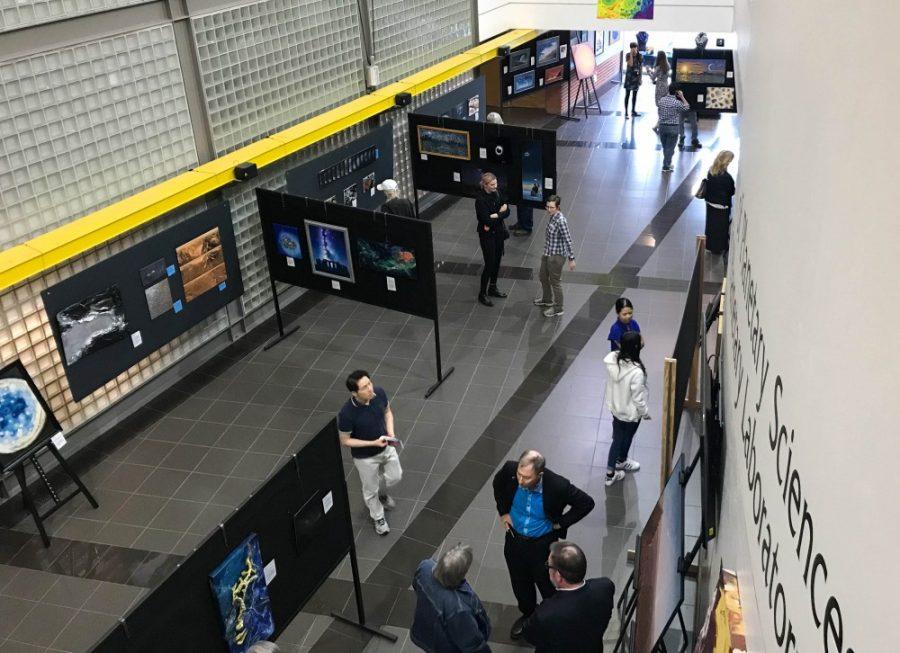The Art of Planetary Science, an art exhibition hosted by graduate students of University of Arizona’s Lunar and Planetary Laboratory, drew over a 1,000 guests this past weekend to admire its marriage of science and art.
Walking through the three floors dedicated to the exhibit, guests would glimpse the gorgeous blues of Jupiter’s south pole taken by the spacecraft Juno and printed and also a finely painted image of Miley Cyrus on a planetary wrecking ball.
The 220 art pieces were created by UA students, artists in the community, scientists and children alike.
RELATED: Anything but a Drag
“We wanted people to experience others’ creativity and see that there is more to science than just typing on a computer and looking at numbers,” said Tracey Esman, an organizer for the event.
The art show, in its fifth year, has grown its community to the international scale, featuring submissions from as far as Hungary, France and even Australia.
For local Tucson artist David Ehien, this was his second year at the event.
“For me, creating art of space, you can let your imagination take off and explore,” Ehien said.
His piece, named Starman, protruded from the canvas as Ehien used space to incorporate new materials and explore the subconscious.
Ehien is a part of the Southern Arizona Arts Guild which regularly hosts art exhibitions and engages with the community.
“I love all the scientists involved in this, they help me find inspiration,” Ehien said.
For Ehien, it is the interactions he with other artists, scientists and the community that excites him the most and gives him the inspiration to return with a new piece next year.
RELATED: SAVOR Food and Wine Festival puts Tucson food, culture on display
Before the event opened to the public this year, two judges, one a scientist and one an artist, selected the three best fine art pieces and the three best data pieces. Guests also selected a visitor favorite.
“A lot of the art is done by scientists. Some of the art used real data created from spacecraft images or their codes,” Laci Brock, another organizer said.
These art pieces made up the data category.
One data art piece featured a topographical plot of the moon taken from scientific data.
“We want to go back to when we were little and loved astronomy cause everything was so pretty,” Esman said.
Fine art pieces extended from poems to videos and UA students and Tucson community members alike were featured.
The event, usually in hosted in the Fall, changed to a Springtime show, corresponding with Tucson’s rock and gem show, in the hopes of drawing more attendees.
“We are funded solely by donation and run solely by graduate students volunteering their extra time,” Esman said.
The event ran all weekend and offered attendees the chance to buy art they especially liked.
If you missed this year’s event, do not worry, the art exhibition will be back next year for its sixth show sponsored by the Lunar and Planetary Laboratory.
In the beginning, some doubted if the event would take off Brock said, yet the mystery and beauty of space continue to draw artists, scientists, and curiosity seeker alike.
Follow Randall Eck on Twitter









